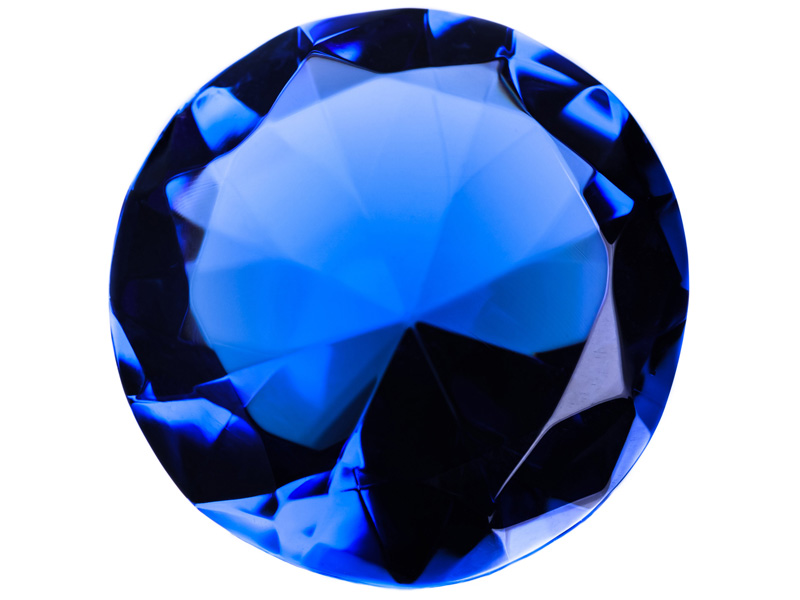Sapphire – Birthstone for the month of September, the name Sapphire comes from the Greek word “Sappheiros”, meaning blue. However, sapphires are formed in nature in a literal rainbow of colors, ranging from very light to very dark blue, bluish green, yellow, brown, pink, violet, slightly reddish orange, and a fabulous pinkish-orange that is referred to as “padparadscha”. The name padparadscha is derived from the Sinhalese for “lotus flower”. The mineral name for sapphire is Corundum and its pure red form it would be known
as ruby. The finest sapphire color in the blue hues is a rich, velvety, cornflower blue known as “Kashmir”, which references the area of India where these precious gemstones were once mined. Most current production comes from Sri Lanka, Burma, Thailand, Australia, Africa and Montana. Sapphire will sometimes occur in nature in such a way whereby numerous needle-like inclusions within the gemstone are oriented in just the right angles within the stone, to produce a phenomenon that is called “asterism”. As such a six-pointed star will appear to float just beneath the surface of the gemstone when subjected to an incandescent light source. These gemstones will always range from translucent to opaque and they depend on the cutters art to fashion them into a polished, domed shape known as “cabochon”.
Enhancements – As is the case with many colored gemstones, sapphires are routinely enhanced to improve their color and their clarity, the most notable being controlled heating. Many enhancement procedures are generally recognized and accepted throughout the jewelry industry and, in most cases, these enhancements are irreversible, permanent, and will produce a gemstone that is more beautiful. One should be leery, however, of enhancement techniques that are not permanent. If you intend to purchase any fine colored gemstone you should deal with a jeweler who is gemologically trained to explain the differences.

